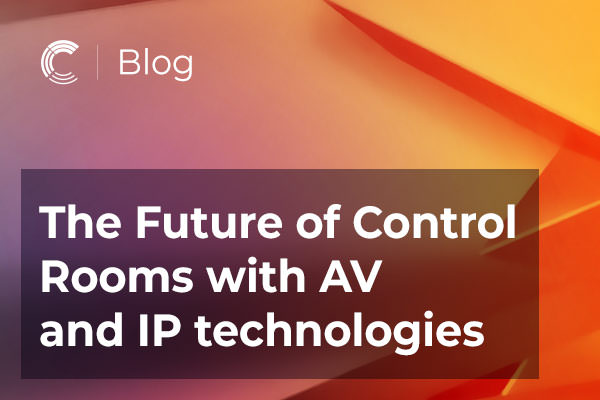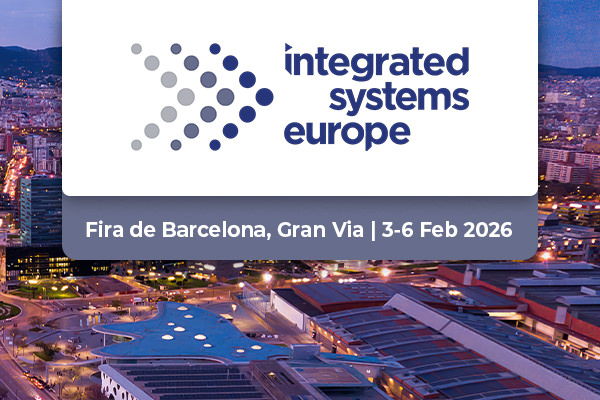
How AI and AV are coming together to reshape our workplace
April 30th, 2024
Matthew Stradling, AV Pre-site Department Lead at Cinos explores how AI and intelligent technology are reshaping our workplace communications and discusses the top privacy considerations for users and organisations.
Although artificial intelligence (AI) has been around for some time, we’ve seen it dominate conversations over the last year. The launch of ChatGPT has undoubtedly been a big factor in catapulting AI to the top of the agenda. Whether companies are using AI to function as personal assistants, transcribe meeting notes or optimise the meeting experience for hybrid workers, one thing is clear – it’s changing the way we work and interact with technology.
At the end of last year, the UK government found that 68 percent of large companies and 34 percent of medium-sized companies have incorporated at least one piece of AI technology into their operations. With most technology offering some form of built-in intelligence or automation, let’s look at what’s currently available to enhance collaboration and drive efficiencies.
Intelligent AV in meeting rooms
One area that can benefit from using AI-powered technology is the meeting room. Utilising artificial intelligence, machine learning, and automation, meeting rooms can be transformed into smart spaces that increase productivity and promote more sustainable practices.
Before the introduction of AI in the meeting room, we were already experiencing a level of automation that powers up and down meeting devices whenever people leave or enter a room. These capabilities reduce energy consumption by ensuring that lighting and room technology are not consuming power unnecessarily. Before these capabilities existed, a separate control system was needed to achieve this level of functionality. Building on this technology, utilising a combination of sensors and AI integrated into meeting room appliances, functions such as people counting can be adopted. These new capabilities help organisations create ‘smart buildings’ by integrating their meeting room appliances with building services such as HVAC to ensure air quality can be kept at optimum levels, improving the working environment.
In the audio space, AI is bringing several enhancements to meeting experiences. It is easy to under value the importance of audio but there’s some clever technology in beamforming microphones that can focus on a voice with pin-point precision and differentiate between a person speaking and background noise such as somebody making a coffee, typing on a keyboard, or rustling papers. Traditionally, these types of noises were quite difficult to eliminate and retain the desired sound. This is even more impressive given these unwanted sounds are often wide band across the whole audio spectrum.
Advancements in camera technology
Once simple tools for capturing images, cameras are now more advanced, offering features which enhance productivity, optimise the meeting experience, and amplify communication in the workplace. By utilising pan-tilt-zoom and speaker tracking technology, cameras can now identify specific speakers in the meeting, automatically capturing them whether they are seated or walking around the meeting room. The introduction of this AI-driven virtual director elevates the meeting experience in spaces using Webex, Microsoft Teams, Zoom and Google Meet. It ensures participants are focused on each person as they speak, rather than trying to identify them individually which can become even more problematic in larger spaces. In addition, many of the newly installed meeting room cameras come equipped with built-in data analytics that enable organisations to monitor and analyse the usage of their meeting spaces; providing the intelligence to achieve the best possible return on their meeting room investments.
The question of privacy still remains
Given all the brilliance that AI technology has to offer, privacy remains a concern. There have been some high-profile cases that have brought privacy issues to light, among them, Zoom’s suspected use of AI without users’ consent. With one in six UK organisations making use of AI in some capacity, It’s important to understand the potential threats that AI poses to privacy and the complexities it raises with installation and maintenance.
The issue with AI, is that it relies on large amounts of stored data and information to further its intelligence. For example, if you’re using AI embedded within your collaboration applications, the processing will be carried out in the cloud rather than stored locally. If you’re working in the public sector or in government, you will want to ensure complete privacy of the information or data in question. The control around whether or not your data is being processed is still a grey area. If the data is being processed, it’s important to know where geographically in the world that data is being stored. Anonymisation is another important consideration here. Whilst we know AI uses anonymised data, who policies this? These are key questions to ask and may be the difference between whether a particular technology is implemented, or not.
The importance of training users
To ensure you’re making the most of your chosen solutions, it’s important that your people feel confident using them. AV training will help your organisation to understand the full range of benefits that your chosen solution offers and highlight useful features that may not have been considered. For example, while installing virtual audio barriers in meeting spaces can be advantageous to ensure crystal clear audio during a call, it adds an extra layer of complexity for users. If participants venture out of these zones without realising, which is quite common, the audio will not be picked up and can lead to disruptive meetings. Although this type of automation and intelligence is useful, it still needs boundaries. It’s important for users to be trained and aware of how this technology works, especially when set up in multi-purpose spaces, where people walk around, and the room is often reconfigured.
As AI becomes more mature, it has the potential to take meetings to the next level. We’re already seeing how the technology is transforming the way teams collaborate and make decisions, as well as providing valuable insights into meeting dynamics, helping leaders optimise team engagement and productivity. As AI continues to evolve, we’ll see the technology contribute to more efficient, inclusive, and collaborative workplaces, propelling organisations towards greater innovation.




